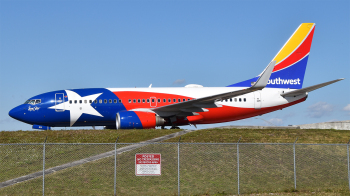On September 7th, 2024 Southwest is once again is in the spotlight for getting dangerously low on approach to an airport.
This time, the Boeing 737 MAX 8 was on approach to Manchester-Boston Regional Airport after a routine flight from Chicago-Midway International Airport. After an altitude alert sounded from tower, the approach clearance was cancelled and the flight was sent around to re-attempt the approach.
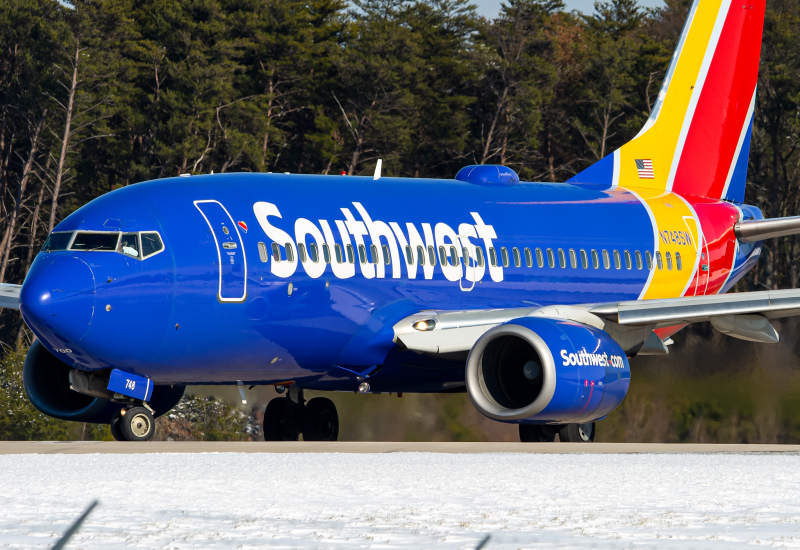
Sequence of Events
After completing most of the flight uneventfully, Southwest 1306 was on approach into Manchester at 11,000 feet and initially advised to expect the RNAV (which is GPS) runway 24 approach into the airport.
At Southwest 1306's request for a more favorable into-the-wind approach, ATC changed their expected approach to runway 17. They then cleared the flight for the Instrument Landing System (or ILS) runway 17 approach into Manchester.
After clearing Southwest 1306 for the approach Air Traffic Control advised the flight to maintain 2,100 feet until an established point (waypoint BLUUM) on the approach before beginning the final descent. Leading up to this point, 2,100 feet is the minimum safe altitude for the approach, as terrain in the area before reaching BLUUM rises up to near 1,324 feet.
After Southwest 1306 read back their clearance, the flight began to descend down and when passing through 2,000, the ATC got a low altitude alert for the flight. They immediately advised Southwest of the situation, and attempted to get the flight back on a stable approach path.
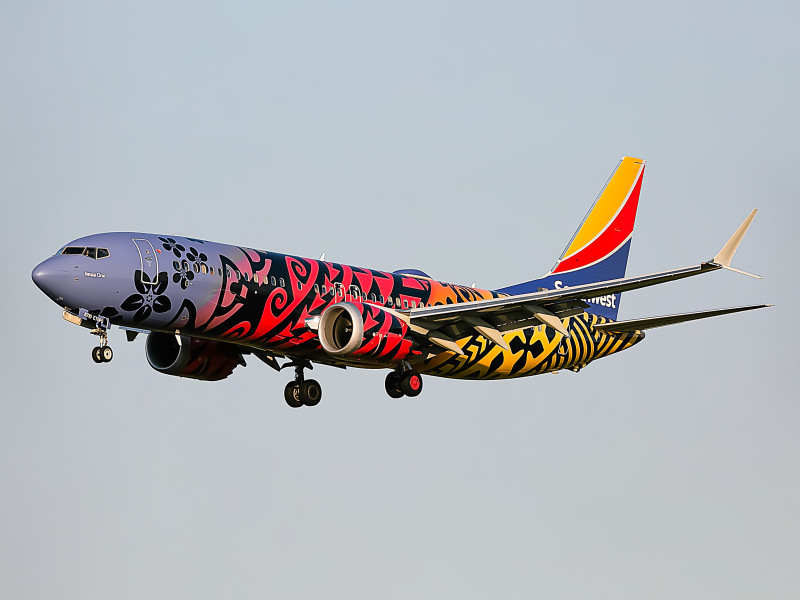
When ATC realized that was not happening fast enough, the approach clearance was cancelled and the flight was sent around for a second try. The second try for the same approach followed prescribed altitudes correctly and landed without incident.
The Concern
This is now Southwest's 3rd major low-to-the-ground altitude infraction in the past few months, and it is becoming an alarming trend even with the supposed FAA oversight being conducted with the airline.
With some of these low altitude events occurring with as little spacing as 500 feet between aircraft and terrain/sea, one needs to question whether standard operating procedures (SOP's) within the airline need to be questioned. Perhaps there is a SOP that is causing pilot distraction and leading to these events.
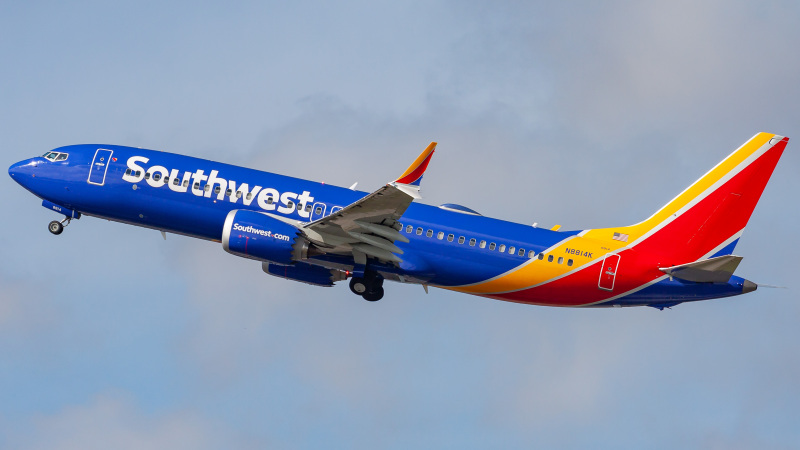
Also, it should be studied if approach changes happened in all three of these events, to see if crew just weren't giving themselves enough time to accommodate for these changes. Regardless, the FAA oversight on Southwest needs to take this latest incident into account and investigate to see just exactly why what happened did happen.
Hopefully, this will be the last of these incidents and the insight can be wrapped up efficiently and quickly, to help pilots across the industry learn to not make whatever mistakes causes these 3 low altitude incidents.
Thousands of Flights Impacted as Winter Storm Blair Hits U.S. » Bomb Threat Cancels Air New Zealand Flight, Delays Passengers » Could You Survive a Plane Crash? The Unlikely Science of Plane Crash Survival »
Comments (6)
 Javed B. Sheikh
In my opinion, this shows disregard for SOP, not fully understanding what approach clearance was and not paying attention to very basic IFR procedures, and too much dependency upon automation.
If it were a Private Pilot doing this, to a degree it would or could be understandable, however from an airline, ATP, Type-Rated two pilots doing this is questionable. On top of it, it was an ILS(precision) Approach and not a Non-Precision Step-Down approach.
As a retired Part121 Captain/Pilot, I am saddened to see this kind of behavior at SWA. It reflects badly not only upon SWA Pilots but also upon the Airline Pilots in general. Let’s not erode the public’s confidence in us, we are the ATPs and Type-Rated Pilots. ATP also stands for Absolute (air)Traffic Precision.
Be safe and be precise please.
Javed B. Sheikh
In my opinion, this shows disregard for SOP, not fully understanding what approach clearance was and not paying attention to very basic IFR procedures, and too much dependency upon automation.
If it were a Private Pilot doing this, to a degree it would or could be understandable, however from an airline, ATP, Type-Rated two pilots doing this is questionable. On top of it, it was an ILS(precision) Approach and not a Non-Precision Step-Down approach.
As a retired Part121 Captain/Pilot, I am saddened to see this kind of behavior at SWA. It reflects badly not only upon SWA Pilots but also upon the Airline Pilots in general. Let’s not erode the public’s confidence in us, we are the ATPs and Type-Rated Pilots. ATP also stands for Absolute (air)Traffic Precision.
Be safe and be precise please.
 John S.
The article's information doesn't quite align with the depiction of the flight on Flight Aware [1]. On the first vector to the final approach course, the airplane's lowest altitude was 2800 feet, which is indeed 100 feet below the FAA's published Minimum Vectoring Altitude (MVA) for that sector (2900 feet), and the rate of descent is rather high (compared to other descents for the flight).
The Minimum Safe Altitude (MSA) for the approach is 4200 feet per the respective approach (MHT ILS or LOC RWY 17), however ATC can clear an airplane lower to ATC's MVA which seems to be the case.
Disclaimer: I did not find the ATC recordings for that flight, on LiveATC.net
Mr. Rafalski, could you please review your information and reconcile with the publicly available facts? Thanks.
[1] https://www.flightaware.com/live/flight/SWA1306/history/20240907/2215Z/KMDW/KMHT
John S.
The article's information doesn't quite align with the depiction of the flight on Flight Aware [1]. On the first vector to the final approach course, the airplane's lowest altitude was 2800 feet, which is indeed 100 feet below the FAA's published Minimum Vectoring Altitude (MVA) for that sector (2900 feet), and the rate of descent is rather high (compared to other descents for the flight).
The Minimum Safe Altitude (MSA) for the approach is 4200 feet per the respective approach (MHT ILS or LOC RWY 17), however ATC can clear an airplane lower to ATC's MVA which seems to be the case.
Disclaimer: I did not find the ATC recordings for that flight, on LiveATC.net
Mr. Rafalski, could you please review your information and reconcile with the publicly available facts? Thanks.
[1] https://www.flightaware.com/live/flight/SWA1306/history/20240907/2215Z/KMDW/KMHT
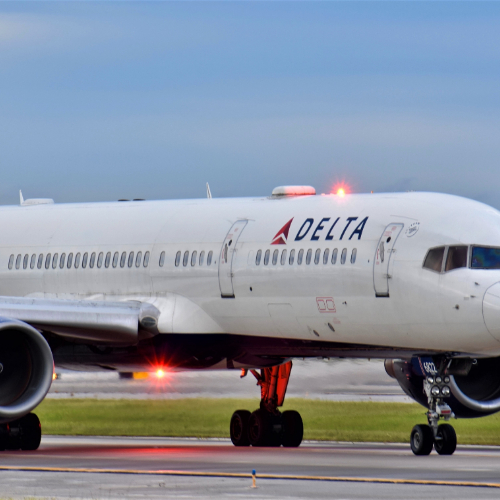 Richard Rafalski (author)
I used the live ATC replay of this flight which included altitudes on the visual representation at the following link: https://www.youtube.com/watch?v=MtnUk1C3u0o
According to the link they got as low as 1700 feet after the GPS waypoint BLUUM. IT's hard to determine which source is more accurate as I've seen issues with flight aware in the past.
Richard Rafalski (author)
I used the live ATC replay of this flight which included altitudes on the visual representation at the following link: https://www.youtube.com/watch?v=MtnUk1C3u0o
According to the link they got as low as 1700 feet after the GPS waypoint BLUUM. IT's hard to determine which source is more accurate as I've seen issues with flight aware in the past.
 Terry
There are way too many of these "anomalies" to be considered anything other than systemic. Since the airline began hiring pilots based on D*E*I, the airline has experienced these "near death" experiences. One of the Southwest execs sent the pilots a notification to "deal with it". If this keeps up, it won't be long before they put one in the dirt. This profession must be based on ability, not on a w*o*ke agenda!
Terry
There are way too many of these "anomalies" to be considered anything other than systemic. Since the airline began hiring pilots based on D*E*I, the airline has experienced these "near death" experiences. One of the Southwest execs sent the pilots a notification to "deal with it". If this keeps up, it won't be long before they put one in the dirt. This profession must be based on ability, not on a w*o*ke agenda!
 Jon
Your narrative sounds speculative. Typically, a source is cited when reporting events like this. Do you have ATC transcripts or at least an AvHerald synopsis of the event? My sources tell me of a possible anomaly with the instrumentation, either onboard or on the ground.
Jon
Your narrative sounds speculative. Typically, a source is cited when reporting events like this. Do you have ATC transcripts or at least an AvHerald synopsis of the event? My sources tell me of a possible anomaly with the instrumentation, either onboard or on the ground.
 John S.
Hi Richard. I stand corrected. Upon initial review on my phone, I indeed missed the altitude deviation, which I now see on my computer's bigger screen. However I'm hesitant to agree with the YouTube personalities analysis of "DANGEROUSLY LOW". Stuff happens in the real world and 100 feet below assigned altitude, presuming that's the extent, is within FAA ATP ACS standards [1]. I'd ride with these pilots today, given the available information.
After learning LiveATC's publicly available archive is limited to 7 days, the actual ATC/flight crew conversation isn't available.
[1] https://www.faa.gov/sites/faa.gov/files/training_testing/testing/acs/atp_acs.pdf Page 45, Item AA.VI.E.S9.
John S.
Hi Richard. I stand corrected. Upon initial review on my phone, I indeed missed the altitude deviation, which I now see on my computer's bigger screen. However I'm hesitant to agree with the YouTube personalities analysis of "DANGEROUSLY LOW". Stuff happens in the real world and 100 feet below assigned altitude, presuming that's the extent, is within FAA ATP ACS standards [1]. I'd ride with these pilots today, given the available information.
After learning LiveATC's publicly available archive is limited to 7 days, the actual ATC/flight crew conversation isn't available.
[1] https://www.faa.gov/sites/faa.gov/files/training_testing/testing/acs/atp_acs.pdf Page 45, Item AA.VI.E.S9.
Add Your Comment
SHARE
TAGS
NEWS SouthwestAirlinesSouthwestAirlinesLowAltitudeIncidentManchesterDangerouslyLowApproachRECENTLY PUBLISHED
 Could You Survive a Plane Crash? The Unlikely Science of Plane Crash Survival
With air travel consistently being heralded as the safest form of public transport, most of us do not board a plane pondering our chances of survival in the event of a crash. But, is it possible to survive one?
INFORMATIONAL
READ MORE »
Could You Survive a Plane Crash? The Unlikely Science of Plane Crash Survival
With air travel consistently being heralded as the safest form of public transport, most of us do not board a plane pondering our chances of survival in the event of a crash. But, is it possible to survive one?
INFORMATIONAL
READ MORE »
 Maldivian Airlines Introduces First-Ever Widebody Aircraft, Plans New China Flights
Maldivian, the government-owned national airline of the Maldives, has just welcomed its first-ever wide body aircraft: the Airbus A330-200. With the new aircraft, the carrier also plans brand-new long haul international flights to China.
NEWS
READ MORE »
Maldivian Airlines Introduces First-Ever Widebody Aircraft, Plans New China Flights
Maldivian, the government-owned national airline of the Maldives, has just welcomed its first-ever wide body aircraft: the Airbus A330-200. With the new aircraft, the carrier also plans brand-new long haul international flights to China.
NEWS
READ MORE »
 Thousands of Flights Impacted as Winter Storm Blair Hits U.S.
Winter Storm Blair has unleashed a huge blast of snow, ice, and freezing temperatures across the Central and Eastern United States.
As of Sunday afternoon, over 6,700 flights and counting have been disrupted. This includes cancelations and significant delays leaving passengers scrambling to change flights and adjust travel plans.
NEWS
READ MORE »
Thousands of Flights Impacted as Winter Storm Blair Hits U.S.
Winter Storm Blair has unleashed a huge blast of snow, ice, and freezing temperatures across the Central and Eastern United States.
As of Sunday afternoon, over 6,700 flights and counting have been disrupted. This includes cancelations and significant delays leaving passengers scrambling to change flights and adjust travel plans.
NEWS
READ MORE »



